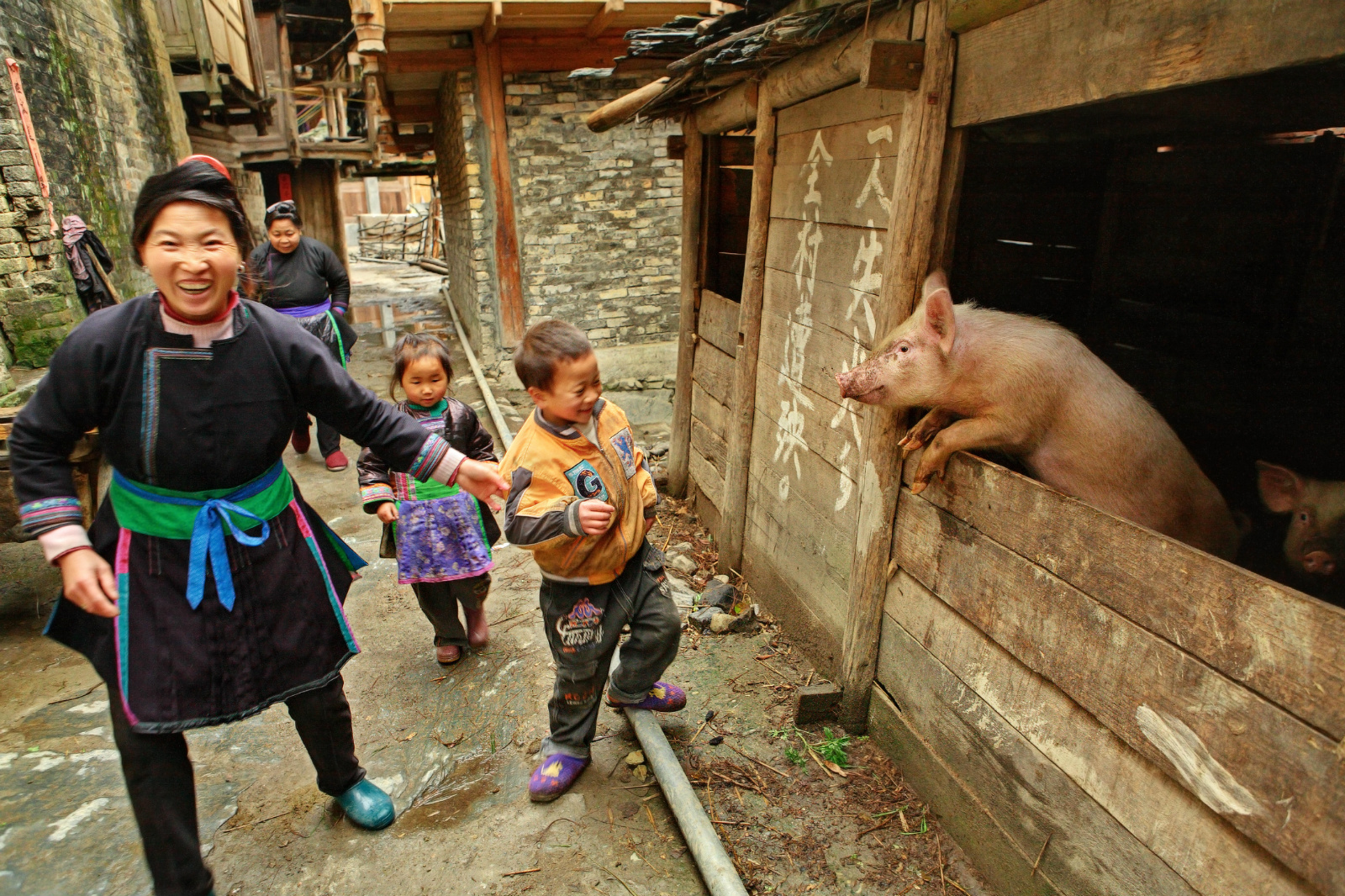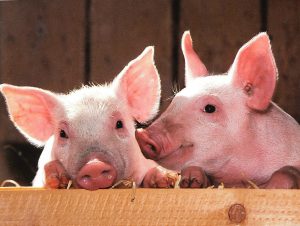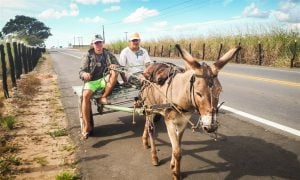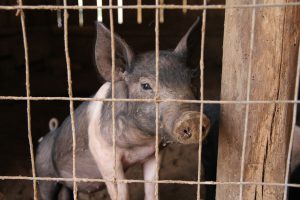Pigs have been central to Chinese farming and culture for millennia. Until quite recently, people lived in close proximity to them, with most families raising a few in or near their homes. While pigs were ubiquitous in the ancient and modern Chinese countryside, for most people pork was a rare treat.
All the way into the socialist era (1949-1976) pigs were primarily valued for their manure while their meat was reserved as a luxury. Indeed, the pig’s ability to convert household and agricultural scraps into the nutrients needed to produce grain-based diets won them high regard. Mao Zedong famously called the pig a “fertilizer factory on four legs.”
Today the times, the pigs and their relation to humans have changed. People are eating more and more pork but are living increasingly distant lives from pigs. The animals are predominantly housed in enclosed structures in rural and suburban areas, hidden from the view of urbanites who dine on swine. Fresh, prepared, processed and packaged pork is widely available, and far more visible than the pigs that produce it.
With far-reaching industrialisation of agriculture in China’s reform era (post-1978), the modern pig is a meat machine and pork production is a big business. China is home to half of the world’s 1.3 billion pigs, and Chinese people eat half of all the pork on the planet. China boasts the world’s largest pork-processing company, the WH Group, as well as a host of vertically integrated and globally competitive agribusiness firms. The country imports close to 70% of the international soybean trade, primarily to feed its hogs and has a world-leading soybean-crushing industry. In China today, it is more apt to say the pig is a “pork factory on four legs.”
Ancient hog–human mutualism
The Chinese path from pig to pork began in the Stone Age.
Genetic and archaeological evidence shows that people in China domesticated pigs from wild boar about 8,000 to 9,000 years ago, although human management of boar populations probably began even earlier. Domestication was a gradual and mutualistic process. Pigs were attracted to human habitations where they could feed on food scraps and rubbish. Humans in turn benefited from the ready source of meat and other resources, especially manure.
The earliest domestic pig bones in China come from the Neolithic archaeological site of Jiahu in Henan province (ca. 9,000-7,800 years ago). By the Bronze Age (ca. 4,000 years ago) pigs were one of the most common domestic animals in China and played important roles in subsistence, funerary rituals and ancestral rites. The late Shang Dynasty capital at Anyang (also in Henan) imported pork in large quantities to feed urban residents, ritual bronze vessels containing pork were included in graveside feasts intended to ensure the future aid of ancestral spirits, and workshops mass-produced thousands of decorative objects from pig incisors for the local market and trade further afield.
Officials estimate that 90-95% of China’s pork is from imported breeds. Several indigenous pigs are now extinct, and dozens more endangered.
By the time of China’s first extant census in 2 CE, there were over 60 million people living in the Han Empire, mostly concentrated in the North China Plain and fertile river valleys. Because most land in these areas was used for farming, people couldn’t let pigs forage freely and so confined them in pens. Pigs were transformed into garbage disposal units for leftovers and other human wastes. As people farmed the land more intensively, the manure of penned pigs became ever more important.
Most families had just a few pigs, which they ate only on special occasions. The highest value of the animal was its nutrient contribution to the crops that sustained China’s population for millennia.
Pig husbandry and breeding in ancient China laid the groundwork for incredible livestock diversity. More than 100 indigenous pig breeds have been identified, each with innumerable locally adapted varieties. This diversity is currently under threat as a result of farmers, agribusinesses and governments valuing certain characteristics over others.
Chinese breeds, the basis of modern hogs
From ancient times and into the modern era, “traditional” Chinese pigs lived mostly on plant materials containing little protein, making their flesh quite fatty. Anyone who has eaten dishes like “red braised pork belly” (hongshaorou) knows that pork dishes in China are often mostly composed of tender lard. For common farmers, the high energy content of pig fat made it a luxury food and an important source of nutrition. They ate pork mostly at Spring Festival, and they kept the lard for frying vegetables and other dishes throughout the year, which became a key characteristic of Chinese cooking. Because pork was a treat saved for festivals, pigs are traditionally associated in Chinese culture with prosperity and good health.
The character 家 (jia), which means both “home” and “family” in Chinese, was made some 3,500 years ago by adding the roof radical to the pig radical; essentially by putting a roof over a pig’s head. Today the word for “meat” in Chinese – (肉, rou) – refers to pork while other meats need to be differentiated as “cow meat” (牛肉), “chicken meat” (鸡肉), etc).
Given their tendency to have large litters, pigs are also associated in China with virility and fertility. When people began to pen them in, they also bred them to mature faster and have more offspring. Millenia later, the Meishan pig will often produce two annual litters of around 15 piglets reaching puberty in three months. Whereas their ancestor the wild boar is much less prolific, having four to eight piglets a year that reach puberty in eight to ten months.
When Chinese pigs like the Meishan arrived in early modern Europe, farmers began to breed them with their own larger but less fecund pigs, initiating modern breeds like Yorkshires and Landraces. These are now the main source of pork in China and around the world.
Reforming pigs
Most of China’s 8,000-odd years of human–hog history has been defined by “traditional” pig raising. While there were attempts to scale up pig rearing during the socialist era, it wasn’t until the industrialisation of agriculture in the reform period that the idea of the pig as a “pork factory” was born, and the scale of Chinese production and consumption began to set world records.
Chinese firms have adopted and innovated the “factory farm” model of industrial meat production developed in the Unites States and Europe in the 1970s. In commercial operations around the world, the equipment, housing structures, rearing methods and even the pigs themselves are the same. A narrow range of breeds – including Yorkshire, Landrace and Duroc – are packed tail-to-snout in confined areas. Largely immobile, they receive feed and water, vaccinations and antibiotics, and their manure and urine are periodically collected.
This “modern” system came to China in the 1980s and intensified throughout the 1990s. Today, China has a robust domestic agribusiness sector with some of the world’s largest industrial pig farms. A commercial operation can raise hundreds of thousands or even millions of pigs each year.
China’s pork industry also includes thousands of mid-size pig farms with fewer than 500 animals, and a declining number of household farmers who keep two or three for self-consumption or sale. At each of these three scales, modern pig breeds have all but replaced Chinese indigenous pigs. Commercial operations grow exclusively imported breeds, while smaller-scale farms often raise imported–indigenous hybrids. Officials estimate that 90-95% of China’s pork is from imported breeds. Several indigenous pigs are now extinct, and dozens more are considered endangered.
Declining agricultural biodiversity is one serious consequence of the industrialisation of pig farming. Others include the spread of livestock diseases; the build-up of antibiotics and antibiotic-resistant organisms in the environment; the build-up of heavy metal and growth hormones in meat; diet-related human health problems like heart disease and cancers; the erosion of rural livelihoods and environments from polluting pig factories; and crippling water and soil pollution largely from manure oversupply.
It seems that the Chinese tradition of valuing pigs as important components of farm ecosystems, while treating pork as a luxury food for special occasions, was probably the right idea.
Read more from China Dialogue’s Environmental History Series








![The Amarnath cave and the market near the shrine. Besides the market, there is a large langar (food canteen) which provides food to the pilgrims during the day; and dinner for those who stay at the site for the night [image by: Athar Parvaiz]](https://dialogue.earth/content/uploads/2019/07/1-1-300x199.jpg)